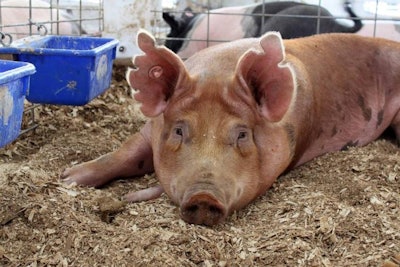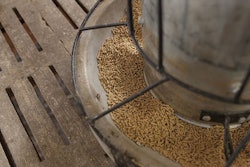
There may be no confirmed cases of African swine fever (ASF) in the United States pig herd, but that doesn’t mean the virus isn’t already present in the United States.
Because the ASF virus has been proven to survive in animal feed, as well as endure a trip across an ocean, the animal feed and pig industries need to be particularly vigilant, said Scott Dee, director of research, Pipestone Veterinary Services. Dee spoke of the risk of ASF’s spread on August 28 during the webinar, “African Swine Fever Update,” sponsored by Kemin and hosted by WATT Global Media.
No country has been hit harder by the ASF outbreak than China, the world’s largest producer and consumer of pork. China is also the only country where certain feed ingredients can be accessed, which presents a huge risk for those who mix and use feed.
“I think African swine fever virus entering the United States through contaminated feed is a daily risk,” Dee said. “It hasn’t happened yet, as far as jumping into pigs, but based on the survival data in feed, and the amount of materials that we import from China of this high-risk nature, I’m quite certain that the virus has entered the country. It just has not yet jumped into pigs.”
According to data provided during the webinar by Will Sawyer, lead economist – protein, Cobank, ASF has also been detected in nine of the world’s top pork-consuming markets: China, the European Union, Russia, Vietnam, Philippines, Ukraine, Hong Kong, Belarus and Serbia.
A plan to help keep ASF away
Dee said one way to help prevent the entry and spread of ASF, which is being researched by Pipestone, is developing and implementing what he called a responsible imports program. Other companies in the U.S. are also applying such a program.
It is a protocol, or science-based plan, for introducing essential products from ASF-infected countries, he explained.
If focuses in seven key areas:
- From what country is the imported product coming?
- What is the virus of concern?
- What is the type of feed ingredient?
- What is the time frame between when the ingredient is produced and when it arrives at the feed mill?
- Are there audits that can be used at key locations such as the ingredient manufacturing plant at the country of origin or at the receiving area in the United States?
- Are there designated storage facilities that can hold the materials for a specific time and at a specific temperature to allow the virus to naturally die?
- Are there any mitigant additives that can either kill the virus or provide a reduction in viral load?
An archived version of the webinar will be made available on WATTAgNet.com.
View our continuing coverage of the African swine fever outbreak.


















